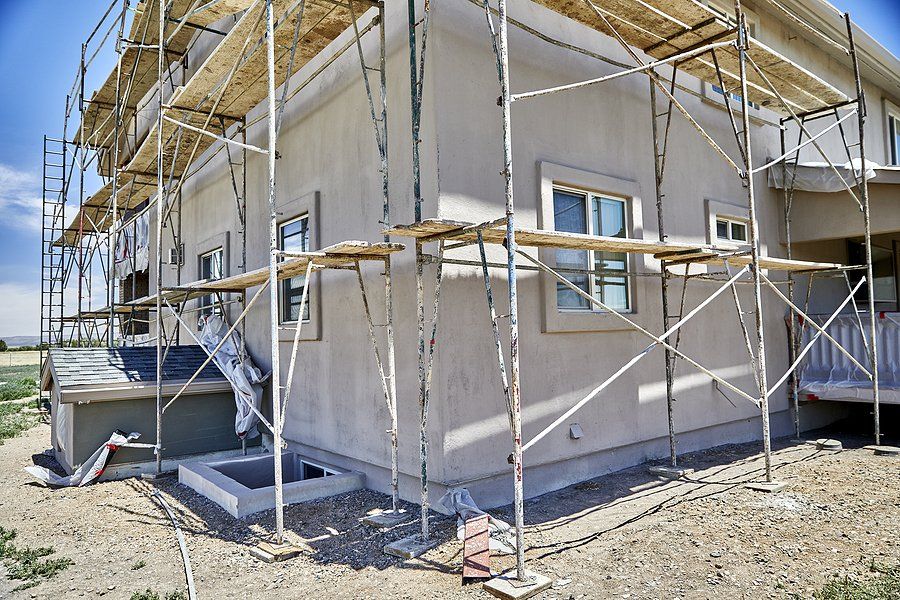Traditional and Synthetic Stucco Applications Victoria
Traditional Stucco vs Synthetic Stucco
Finish Types:
There are essentially three stucco finishes: fine (30-30 sand, like talcum powder), medium (20-30 sand), and heavy (16-20 sand).
Application Insights:
- The challenging application process of an acrylic finish, highlighting its thickness (30-70 times thicker than paint) and the precision required for a smooth application. This process contrasts with the simpler application of cementitious finishes.
- Cost Comparison: Acrylic finishes are significantly more expensive, ranging from $60 to $100 per bucket, compared to cementitious finishes, which cost $17 to $25 per bag of mix. Acrylics also require a primer, adding to the labor and cost.
- Homeowner Satisfaction: Despite the higher cost and application difficulty, homeowners prefer acrylic finishes for their aesthetic appeal, demonstrated by the project's successful outcome.
Insights based on numbers:
- Acrylic finishes are 3 times as expensive as cementitious finishes.
- Acrylic finishes require a thickness 30-70 times greater than standard paint, indicating their durability and the effort needed for application.
- The cost difference and application complexity between the two stucco types significantly influence homeowner choices and project planning.
Frequently Asked Questions
How do environmental factors affect the choice between acrylic and cementitious stucco finishes?
Acrylic Finishes: Given their higher cost, thickness, and the detailed application process described, acrylic finishes might offer better durability and flexibility, making them potentially more suitable for environments with variable weather conditions, such as areas with high moisture or frequent temperature fluctuations. Their ability to maintain a consistent appearance despite dark colors suggests they might perform well in environments with strong sunlight exposure.
Cementitious Finishes: These are described as less expensive and simpler to apply. While the video does not explicitly discuss their environmental suitability, cementitious finishes traditionally offer good breathability, making them a suitable choice for dry climates. However, their color consistency could be challenged in environments with intense sunlight.
In summary, the inherent properties of acrylic and cementitious finishes suggest that acrylic may be preferred for more demanding environmental conditions due to its durability and flexibility, whereas cementitious finishes might be favored in more stable, dry climates for their cost-effectiveness and traditional appearance.
What are the long-term maintenance differences between acrylic and traditional stucco?
Acrylic Stucco: Its composition and the detailed application process suggest that acrylic stucco might be more resistant to cracking and fading over time. The thickness of the acrylic finish (30-70 times thicker than paint) implies a durable surface that could potentially withstand environmental elements more effectively, possibly leading to lower maintenance in terms of repair and color retouching. The need for a primer and the method of application indicate that acrylic stucco might have specific maintenance needs to preserve its aesthetic qualities.
Cementitious Stucco: While less expensive and easier to apply, cementitious stucco may require more frequent maintenance due to its susceptibility to cracking with temperature changes and potential for color fading. The cost-effectiveness of cementitious materials might translate to higher long-term maintenance costs if repairs or color touch-ups become necessary more frequently.
In conclusion, acrylic stucco, with its higher initial cost and application complexity, suggests a potentially more durable finish that could lead to lower long-term maintenance needs. In contrast, traditional cementitious stucco, being less expensive upfront, may incur higher maintenance costs over time due to its physical properties.
How does the color choice impact the application and appearance of stucco finishes?
Darker Colors Complexity: It mentions that achieving a consistent appearance with darker colors is more challenging than with lighter shades. This difficulty arises because darker hues may reveal inconsistencies more readily, making it harder to maintain a uniform look across the stucco surface.
Application Consistency: The presenter notes that whether the finish is acrylic or cementitious, the goal is to achieve a solid, consistent color finish, akin to a painted surface. However, the inherent texture and application method of stucco finishes can make this challenging, especially with dark colors.
Expertise Required: The application of darker colored finishes, therefore, requires more expertise and attention to detail during the application process to ensure a uniform and aesthetically pleasing outcome. This is true for both acrylic and cementitious stucco types but is particularly emphasized in the context of acrylic finishes due to their thicker application and the precision required.
In summary, color choice significantly impacts both the application process and the final appearance of stucco finishes, with darker colors presenting additional challenges in achieving a consistent and uniform look.
Contact us today to find out how we can be your perfect stucco solution


